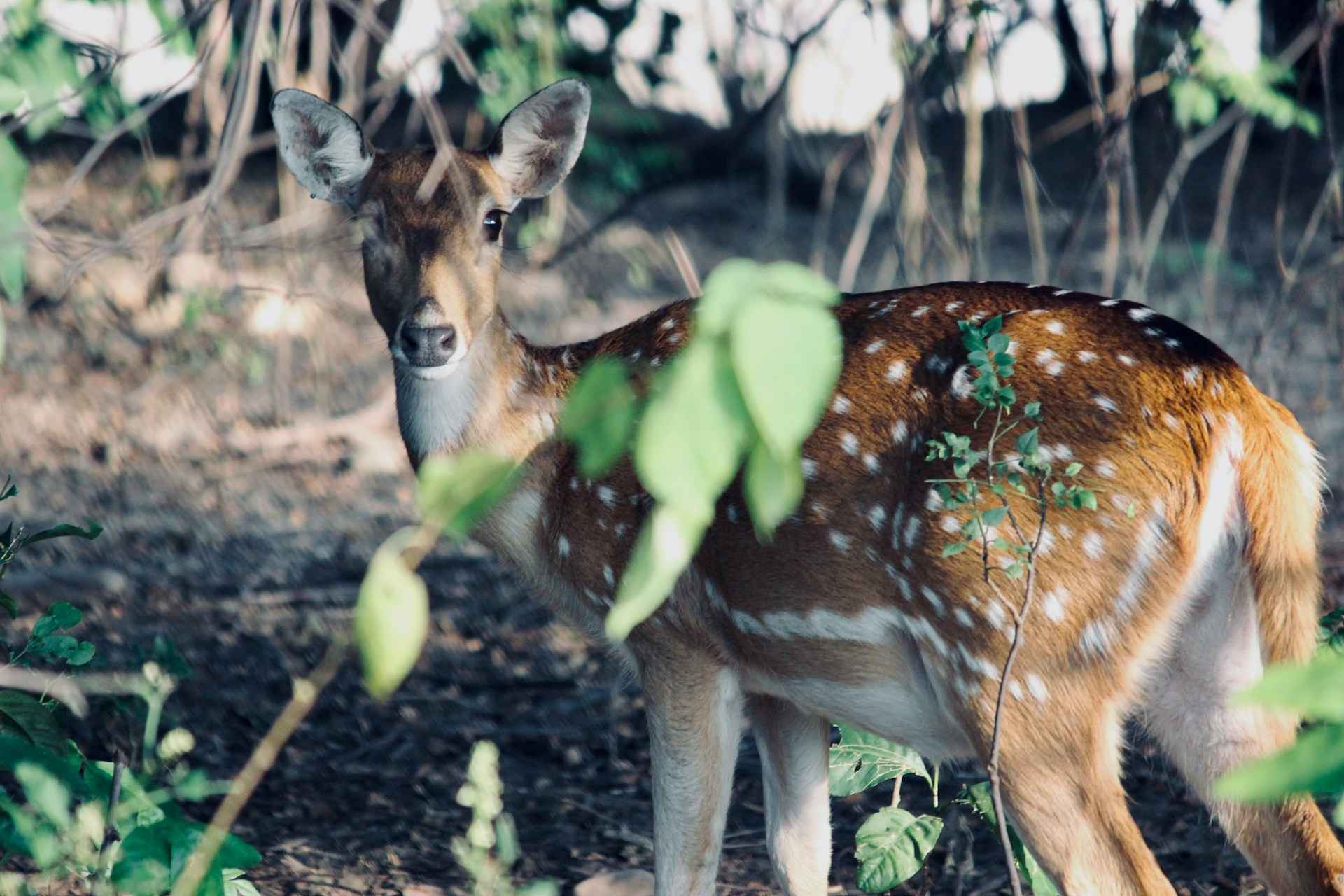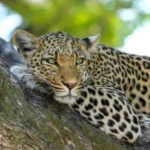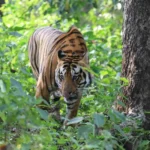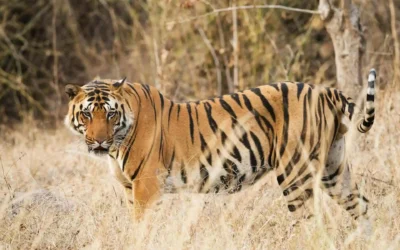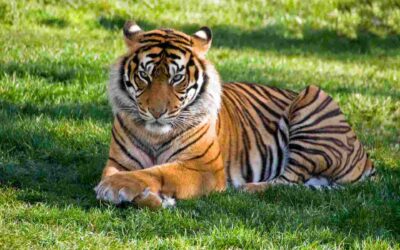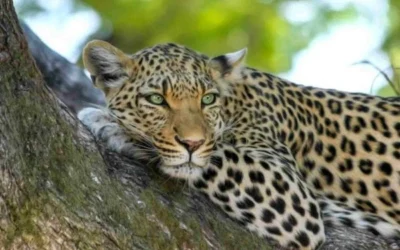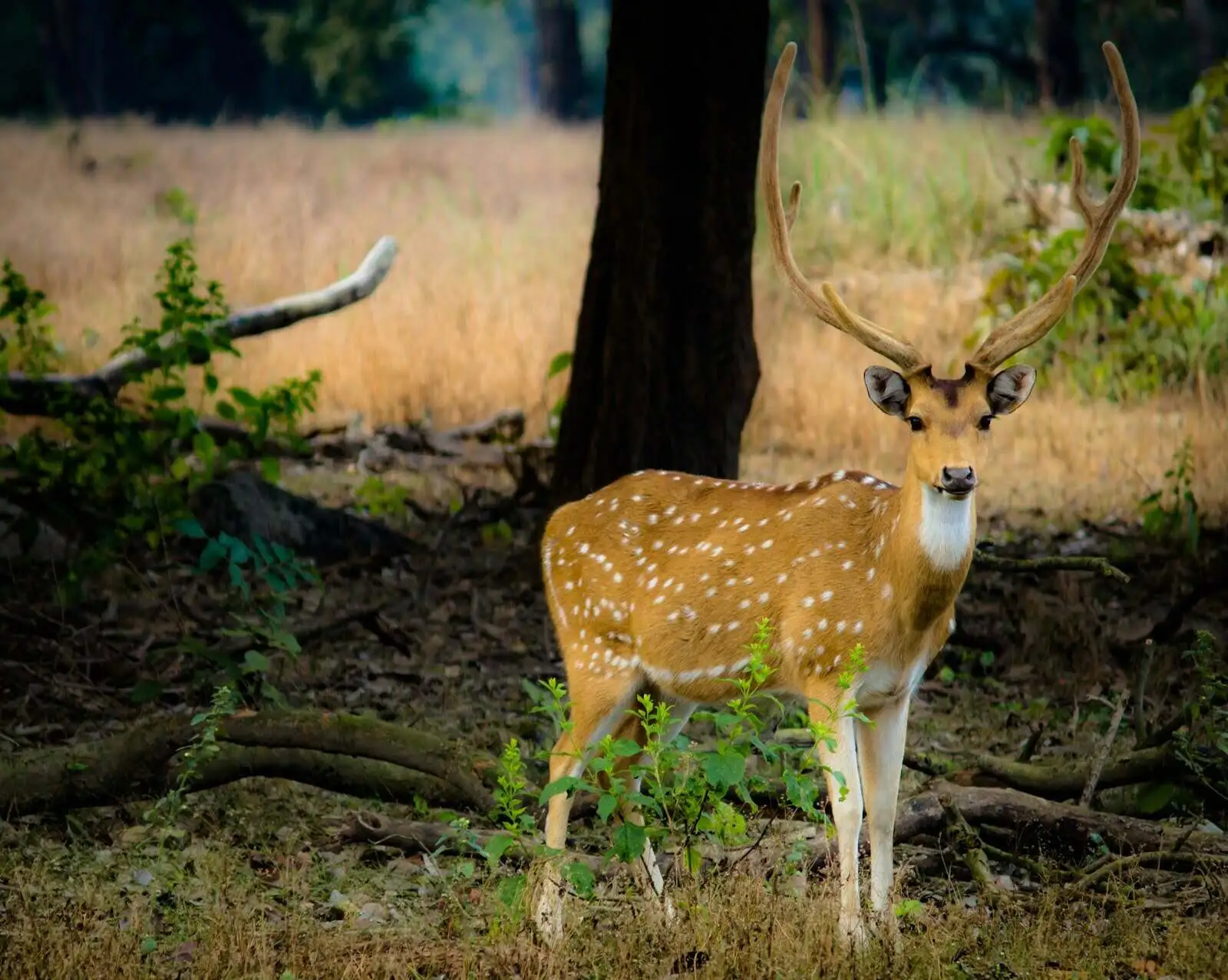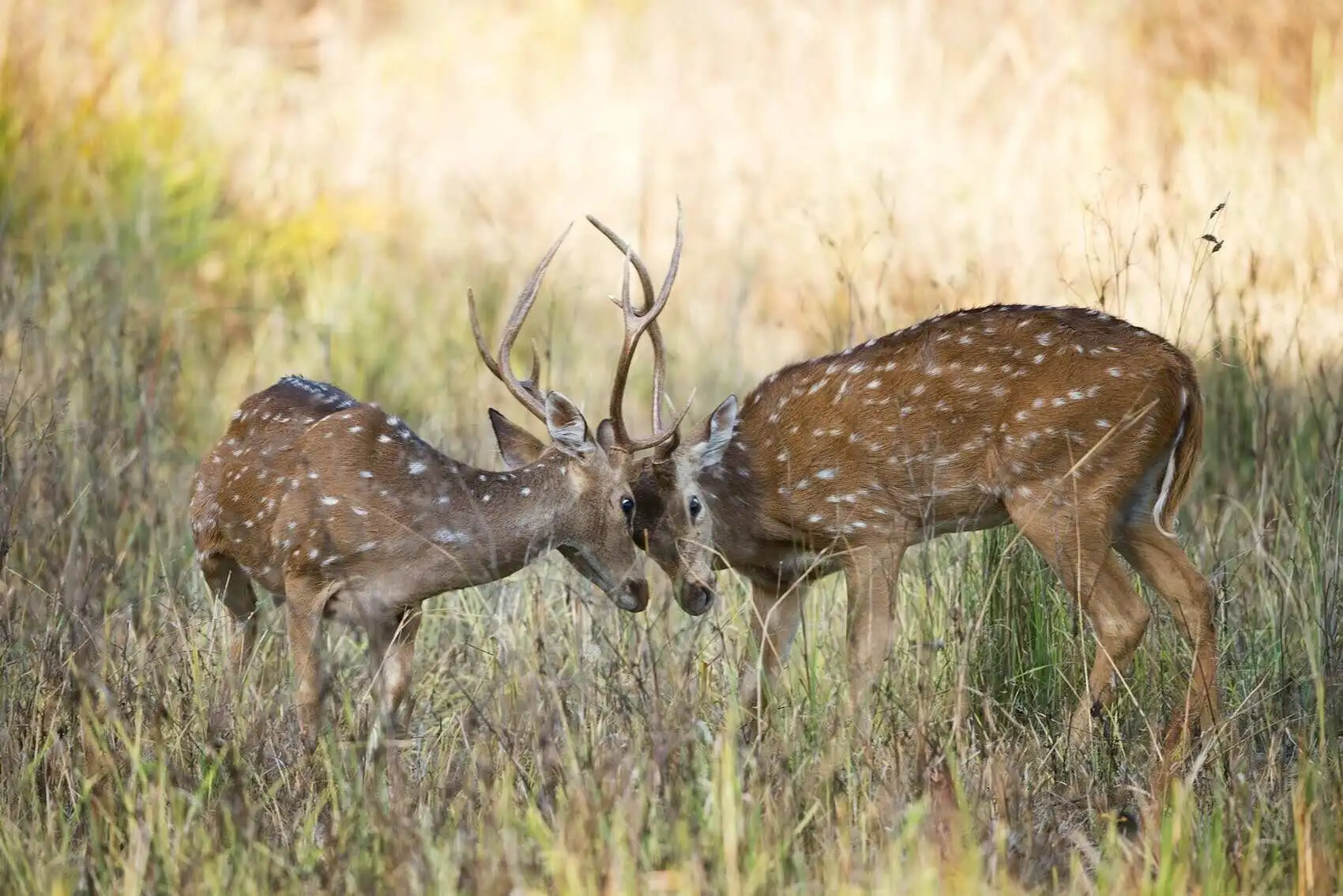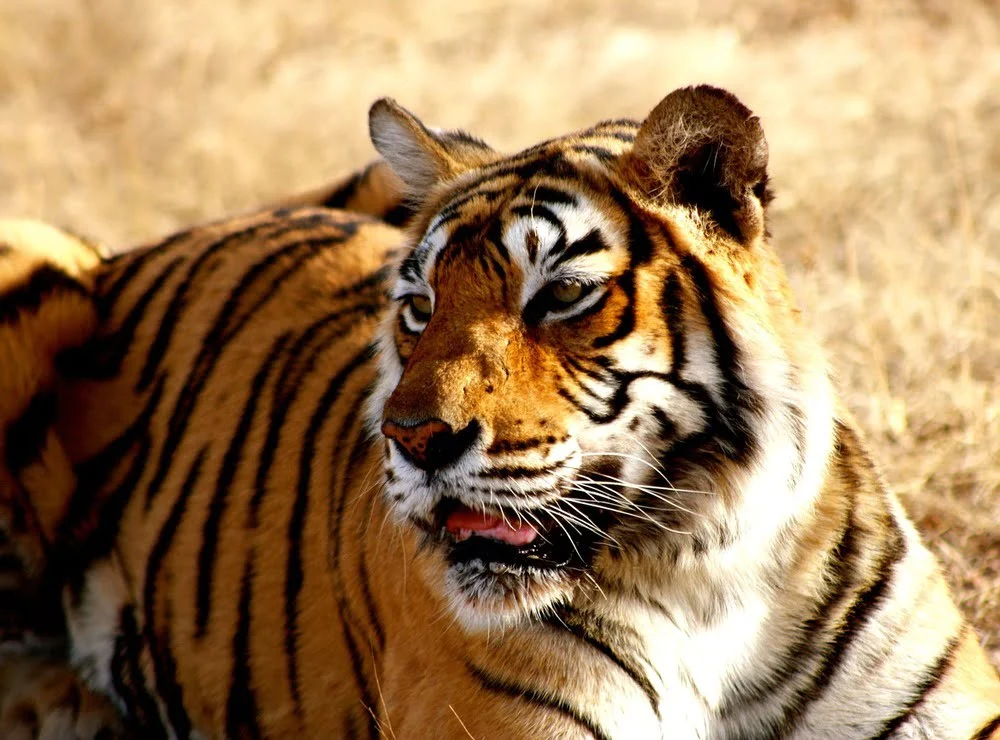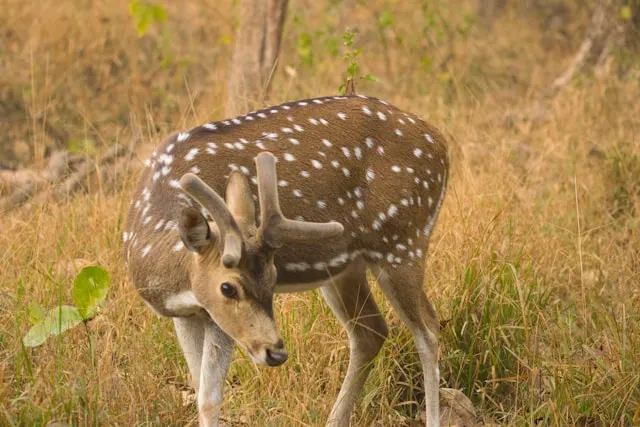The Ultimate Wilderness Experience at Corbett
Jim Corbett National Park, located in the foothills of the Himalayas in Uttarakhand, India, is not just a wildlife destination, it’s a living legacy. Established in 1936 as Hailey National Park, it is India’s oldest tiger reserve and the birthplace of Project Tiger. With its dense sal forests, vast grasslands, and meandering rivers, Corbett offers an unparalleled blend of thrill and tranquility. It’s a land where the mighty Bengal tiger roams freely, elephants march majestically, and over 500 species of birds fill the air with melody. A trip to Corbett is an encounter with raw wilderness and timeless beauty that lingers long after you’ve left its gates.
Exploring the Wild Heart of Corbett
Zones and Entry Gates
Jim Corbett National Park is divided into multiple tourism zones to manage visitors efficiently while preserving its fragile ecosystem. Choosing the right zone and gate is crucial for optimizing your wildlife experience.
A. Understanding the Zones of Corbett
Corbett is divided into Core Zones (most popular for wildlife sightings) and Buffer Zones (open throughout the year and offering great value).
Core Zones:
- Dhikala Zone (Dhangarhi Gate): The most famous and ecologically rich part of Corbett. Known for prime tiger and elephant sightings, Dhikala offers a chance to stay inside the forest lodge, making it an exclusive experience. Prior booking is mandatory.
- Bijrani Zone (Aamdanda Gate): Renowned for its beautiful landscape and abundant wildlife, Bijrani provides an excellent opportunity for spotting big cats and herds of deer.
Jhirna Zone (Dhela Gate): Open all year round, Jhirna offers good sightings of sloth bears, elephants, and a variety of birds. - Dhela Zone (Dhela Gate): Added recently, Dhela boasts rich flora and fauna and remains open year-round.
- Durga Devi Zone (Durga Devi Gate): Located in the northeastern part of the park, this zone is ideal for birdwatching and sighting leopards and elephants along the Ramganga River.
Buffer Zones:
- Garjiya Zone (Aamdanda Gate): A newly opened area close to Ramnagar, offering picturesque views and decent wildlife activity.
- Sitabani Forest Zone: Technically outside the core park boundary, Sitabani is a beautiful forest reserve that allows private vehicles and is ideal for birdwatching and temple visits.
B. Choosing Your Entry Gate
Your choice of entry gate depends on what you want to experience:
- For Tiger Enthusiasts: Choose Dhikala or Bijrani, known for frequent tiger sightings.
- For Year-Round Access: Opt for Jhirna or Dhela zones.
- For Birdwatchers: Visit Durga Devi or Sitabani zones.
- For Scenic Safaris: Bijrani and Garjiya zones offer stunning landscapes and diverse wildlife.
Tip: Zones may close temporarily due to monsoon rains or wildlife movements. Always confirm before booking.
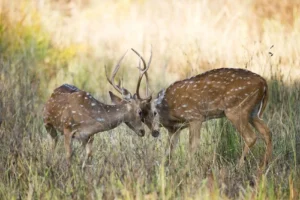
Planning Your Corbett Safari Adventure
A. Unveiling the Ideal Season for Your Corbett Encounter
The best time to visit Jim Corbett National Park for wildlife sightings is between November and June, when the park remains fully open.
- Winter (November to February): Pleasant weather and clear skies make it perfect for safaris. This is the best time for birdwatching and spotting tigers basking in the sun.
- Summer (March to June): Wildlife congregates near water bodies, making tiger sightings more frequent. However, temperatures can rise above 40°C plan early morning or late evening safaris.
- Monsoon (July to October): Most core zones, especially Dhikala and Bijrani, remain closed for safety reasons. However, Jhirna and Dhela zones stay open year-round, allowing visitors to experience Corbett’s lush greenery and fewer crowds.
B. Charting Your Course to Corbett’s Wild Heart
- Nearest Airport: Pantnagar Airport (PGH) is the closest, around 80 km from Ramnagar, the gateway town to Corbett. Taxis are easily available from the airport.
- Nearest Railway Station: Ramnagar Railway Station (RMR) connects Corbett with major Indian cities like Delhi, Lucknow, and Varanasi. It’s only a few minutes’ drive from most safari gates.
- By Road: Ramnagar is well connected via NH309 from Delhi (approx. 250 km / 6 hours). You can drive your own vehicle or hire private taxis.
Exploring the Wilderness – Safaris in Corbett
The park can be explored through Jeep Safaris, Canter Safaris, and Elephant Rides (in limited areas).
- Jeep Safari: Best for personalized experiences. Each jeep carries up to six people and allows flexible movement through the forest.
- Canter Safari: Operates only in Dhikala Zone and accommodates around 16-18 people. It’s an affordable way to experience the core of Corbett.
- Elephant Safari: Conducted in select buffer areas under supervision. It offers a unique perspective of the jungle.
Pro Tip: Book your safaris online well in advance through the official Corbett website, as entries are limited and fill up fast during peak months.
Beyond the Safari – Hidden Gems of Corbett
- Corbett Museum (Kaladhungi): Located in Jim Corbett’s former home, this museum celebrates his legacy and showcases rare artifacts, writings, and photographs.
- Garjiya Devi Temple: A famous riverside shrine perched on a large rock in the Kosi River, beautiful at sunrise and sunset.
- Corbett Falls: A scenic waterfall near Kaladhungi, surrounded by dense teak forests.
- Sitabani Temple and Forest Trail: Ideal for birdwatching and tranquil forest walks.
- Local Villages: Interact with Kumaoni locals, explore handicrafts, and experience rural Uttarakhand’s warm hospitality.
Accommodation Options for Every Traveler
Corbett offers a wide range of stay options, from luxury jungle lodges to eco-friendly camps and forest rest houses inside the park.
- Luxury Resorts: Perfect for those seeking comfort and premium amenities amidst the wild (e.g., Taj Corbett Resort & Spa, The Riverview Retreat).
- Forest Lodges: For the true adventurer, staying inside Dhikala, Bijrani, or Jhirna rest houses offers an authentic experience (booked through the forest department).
- Budget Stays & Homestays: Affordable accommodations near Ramnagar and Kyari provide cozy stays close to nature.
Essential Tips for Your Corbett Adventure
Packing for the Wild
- Clothing:
- Winter: Warm layers, fleece jackets, scarves, and gloves for chilly morning safaris.
- Summer: Light cotton clothes, hats, and sunglasses to beat the heat.
- Footwear: Comfortable closed shoes or trekking shoes for safaris and short walks.
- Gear: Binoculars, sunscreen, insect repellent, reusable water bottles, and a camera with extra batteries.
Respecting the Park and Its Wildlife
- Maintain silence and follow your guide’s instructions.
- Avoid feeding animals or stepping out of the vehicle inside the park.
- Refrain from using flash photography.
- Dispose of waste properly and minimize plastic use.
Maximizing Your Experience
- Book safaris and stays at least 45 – 60 days in advance during peak season (Nov – Feb).
- Hire experienced naturalists to enrich your understanding of Corbett’s ecology.
- Be patient, wildlife sightings depend on luck, timing, and keen observation.
- Stay flexible; weather or safety conditions may cause sudden zone closures.
Additional Practical Information
- Entry Fees & Permits: Vary by zone, nationality, and vehicle type. All bookings can be made through the official Corbett Tiger Reserve website.
- Connectivity: Mobile network and internet are patchy within the park, consider it a welcome digital detox.
- ATMs & Currency: Carry cash (INR), as ATMs are limited near Ramnagar and not available inside the park.
- Health & Safety: Carry essential medicines and follow park regulations strictly for a safe experience.
Conclusion
Where the Wild Calls You Back
Jim Corbett National Park is more than a safari, it’s a journey into India’s wild heritage. Here, each rustle in the sal forest tells a story, every dawn brings new adventure, and every tiger sighting etches itself into memory.
By embracing responsible travel and respecting nature’s rhythm, you not only witness the wild but help preserve it for generations to come. So pack your binoculars, charge your camera, and let Corbett’s timeless wilderness call you into its heart, a rendezvous with nature that will stay with you forever.

